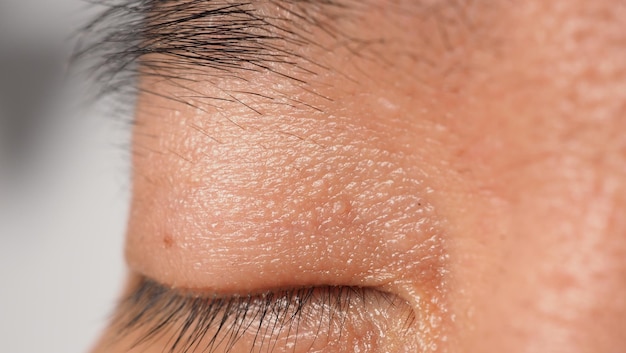Introduction
Eye birthmarks, also known as iris birthmarks or nevi, have fascinated both medical professionals and the general public for centuries. These unique markings on the iris, the colored part of the eye, have given rise to various theories and speculations. In this article, we delve into the enigmatic world of eye birthmarks and explore the mysteries surrounding their origins, meanings, and potential implications.
Eye Birthmarks: A Closer Look
1.1 Understanding the Iris The iris is a complex structure responsible for controlling the amount of light that enters the eye. It contains pigmented cells that give it its characteristic color and patterns. Eye birthmarks manifest as unusual markings, spots, or patches on the iris.
1.2 Types of Eye Birthmarks Eye birthmarks can present in different forms, including freckles, moles, discolorations, and streaks. They can vary in size, shape, and color, ranging from light brown to dark brown or even black.
Theories on Eye Birthmark Origins
2.1 Congenital Factors Some eye birthmarks are believed to be present at birth, indicating a congenital origin. It is hypothesized that certain genetic mutations or variations during embryonic development might contribute to the formation of eye birthmarks.
2.2 Acquired Factors Other eye birthmarks may appear later in life due to various acquired factors. These can include trauma to the eye, inflammation, or exposure to certain medications or chemicals. Acquired eye birthmarks are generally not present from birth and can develop over time.
Superstitions and Cultural Beliefs
3.1 Mythological Significance Throughout history, eye birthmarks have often been associated with mystical or supernatural qualities. In some cultures, they are believed to be marks left by gods or divine beings, signifying special powers or protection.
3.2 Predictive Powers Certain folklore suggests that eye birthmarks hold the ability to foretell an individual’s future or provide insight into their personality traits. This belief has led to the development of various interpretations and interpretations associated with different patterns and locations of eye birthmarks.
Medical Considerations and Implications
4.1 Health Risks and Concerns While most eye birthmarks are benign and do not cause any health issues, some cases may require medical attention. Eye birthmarks that change in size, shape, or color, or those accompanied by vision problems or other symptoms, should be evaluated by an eye care professional to rule out any underlying conditions.
4.2 Diagnostic and Genetic Studies Advancements in medical technology have allowed for detailed examination of eye birthmarks. Genetic studies are being conducted to explore possible connections between certain types of eye birthmarks and underlying genetic conditions or syndromes.
Embracing Individuality and Uniqueness
5.1 Aesthetics and Self-Expression Eye birthmarks, like any other physical characteristic, contribute to an individual’s uniqueness and beauty. Many people with eye birthmarks have embraced them as a part of their identity, viewing them as a form of self-expression rather than a flaw.
5.2 Awareness and Acceptance Increasing awareness and understanding about eye birthmarks can help dispel misconceptions and promote acceptance. By educating ourselves and others, we can foster a society that appreciates the diversity and individuality of its members.
Conclusion
Eye birthmarks continue to captivate us with their enigmatic presence. While the origins and meanings of these intriguing markings are still subject to speculation, advancements in medical research and the growing acceptance of diversity are helping shed light on their complexities. As we continue to explore the mysteries of eye birthmarks, let us embrace the beauty and uniqueness that they bring to each individual.

